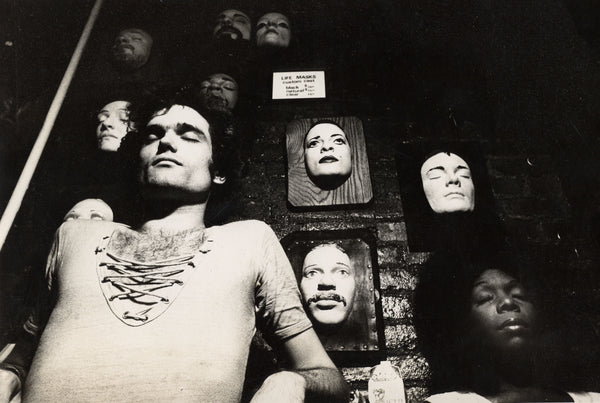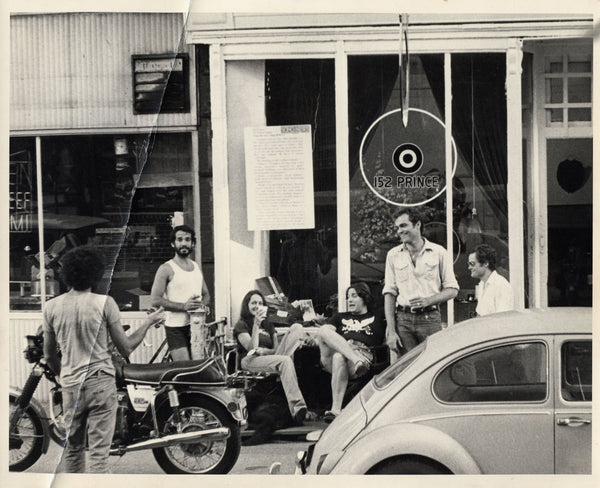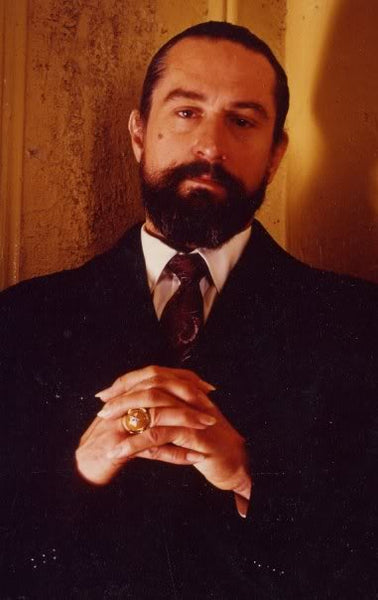*Please note our work is custom made-to-order so allow 4-5 weeks for production and shipping time. Need something sooner? Email us at info@AlexStreeter.com to see if we have your piece in stock.
History
The Sorcerer’s Cradle
1967-1971
During the cultural revolution of the late 1960’s, Alex Streeter was living at ground zero of the counter culture in San Francisco. It was the Summer of Love and a time of discovery for him as he began carving pieces of redwood bark into talismans and pendants. His earliest creations were sold in original Haight-Ashbury stores like Happy Jack, The Good Earth and Wild Colors as well as the Magic Mountain and Texas Pop festivals.

In the 1970’s, he returned to his native New York and found his way to Soho, which at that time was an abandoned industrial neighborhood nicknamed “Hell’s Hundred Acres.” Intrepid artists began moving into the affordable, light-filled spaces, and Streeter opened one of Soho’s first stores at 152 Prince Street.
Exploration and Alchemy
1972-1975
Originally called “Store,” 152 Prince Street sold tie-dyed denim, death mask sculptures, hand-tooled leather belts, and divination books. Alex transitioned from carving wood to cutting and soldering metal, and created the original Flying Heart, one of his oldest and most collected jewelry designs. Having studied printmaking at Rhode Island School of Design, he employed acid-etching to sheets of alloyed metal called new gold and created Astrological pendants.

In 1973 he traveled to Morocco where he began carving wax in earnest. It was in this mystical North African kingdom that the pages of his sketchbook began taking life into the whimsical forms that would define his work: The Flying Fish Pendant, Tiny Fly, Berber Cross and Moroccan Window Pendant were born. In addition, the pentagram that would later become synonymous with Alex Streeter’s art first appeared in jewelry he created in this time.
A year later, he found himself backpacking through a jungle in the Yucatan Peninsula—and becoming an unwitting food source to its resident insects. From the nightmare of this experience was born the Cicada Ring that would morph into the Superfly, later exhibited at the 24 Collection in Miami, Florida.
Acrobats and Amazons
1976-1979
“Store” at 152 Prince Street was soon filled with Alex’s first silver collections. In the summers, Alex would close the shop and travel to renew his cultural inspirations. He again traveled to Morocco as well as France and Sweden, where he conceived of the Tiny Dancer Charm. He was commissioned by British designer Thea Porter to design a line of jewelry to compliment her work, and for this he created the Chinese Acrobat Collection—all one-of-a-kind pieces that were never reproduced.

Back in Soho, Alex Streeter joined in the artistic explosion that was redefining downtown New York. The neighborhood was edgy, even dangerous, and pioneering artists were inhaling it all and incorporating it into their work. Leo Castelli and Alanna Heiss launched their first galleries. Gordon Matta Clark turned eating into art with a restaurant called Food, where dinner was prepared by rotating guest artists. Streeter designed a defense-themed jewelry line that included armadillo shoulder pads and bejeweled knuckle dusters and premiered it in the Battle of the Amazons. A flatbed truck was parked in front of 152 Prince Street and converted into a makeshift ring where models draped in Streeter’s new collection boxed for the unsuspecting public.

Home and Away
1980-1986
Alex’s work in the 1980s broadened from charmed adornments to conceptual sculptural pieces. His travels to India bore the Bull and Lion necklace, which depicts mankind overcoming conflict and working towards prosperity. His time in Berlin and Munich inspired the Workers Series. In the swan song of the Cold War, before the fall of the Berlin Wall, he interpreted the human struggle in pieces that included tiny human forms building pipelines and mining stones. Homesick for his native city, he carved, from memory, the New York City Skyline collection, that includes miniature representations of all of Gotham’s famed buildings.

The Devil Knocks
1987
By then, “Store” at 152 Prince Street had assumed the name of its proprietor: Alex Streeter. One afternoon, as the artist sat carving his work, two men walked through the door. They were art directors for an Alan Parker movie project, and had come to the conclusion that Alex Streeter was the strangest jeweller in town and thus the perfect man to adorn the actors of the horror mystery Angel Heart. He was commissioned to carve a collection in silver that included a hair pin, necklace and ring. The pentagram he’d first started playing with in Morocco resurfaced as the centerpiece of his most successful creation ever—the Angel Heart Ring. Originally worn by the film’s stars Robert De Niro and Charlotte Rampling, the ring continues to be his signature work twenty plus years later. The Angel Heart Ring has been worn by rock stars worldwide including Japanese Superstar, Hyde of Arc~en~Ciel and Marilyn Manson. The ring continues to be reinterpreted by the artist, and loved and collected by generations of fans.

The Sorcerer’s Success
1987-Present
The success of the Angel Heart Ring broke the door open for the wide range of Alex’s creations to be in high demand at photo shoots, in the movies, or on the runway. Whether draped upon models in Glamour or Vogue, or catching the stagelight from the necks and fingers of Jimmy Page, Steven Tyler, Axl Rose, Joni Mitchell, David Bowie, Madonna, Aaliyah, Hyde or the Roots’ Kirk Douglas, Alex Streeter’s vision locks eyes with the camera.
In 2000, Alex Streeter closed his flagship store in Soho and began concentrating solely on his art, creating new collections faster than he could find the silver to cast them. As his success began to spiral, and his name began to spread across Europe to the Far East, Alex Streeter became a father, and today Lily Streeter works for the family business in its New York studio.
In 2006, Alex Streeter moved to the Arizona desert where he continues to carve visionary miniatures of life, steeped in mystery, love and loss. But the small scale alone is incapable of encompassing Streeter’s imagination. The artist has turned his house and studio in the Historic Barrio Viejo in Downtown, Tucson into a living museum he calls Fort Surrender, filled with jewelry, sculptures, and the occasional skeleton. If you are a collector, and you find yourself on the dusty streets of downtown Tucson, pay him a visit, and perhaps you will catch the master laboring in his alchemical laboratory.

Alex Streeter travels annually to the East to launch limited edition creations and to exhibit his latest designs. Past destinations have included Taiwan, Thailand, South Korea and Japan. His daughter Lily and apprentice Rebekah run his workshop in New York City’s historic Lower East Side and ship his designs worldwide. At present, they are attempting to archive the nearly 2000 and counting creations in Alex Streeter’s ever-expanding body of work.
